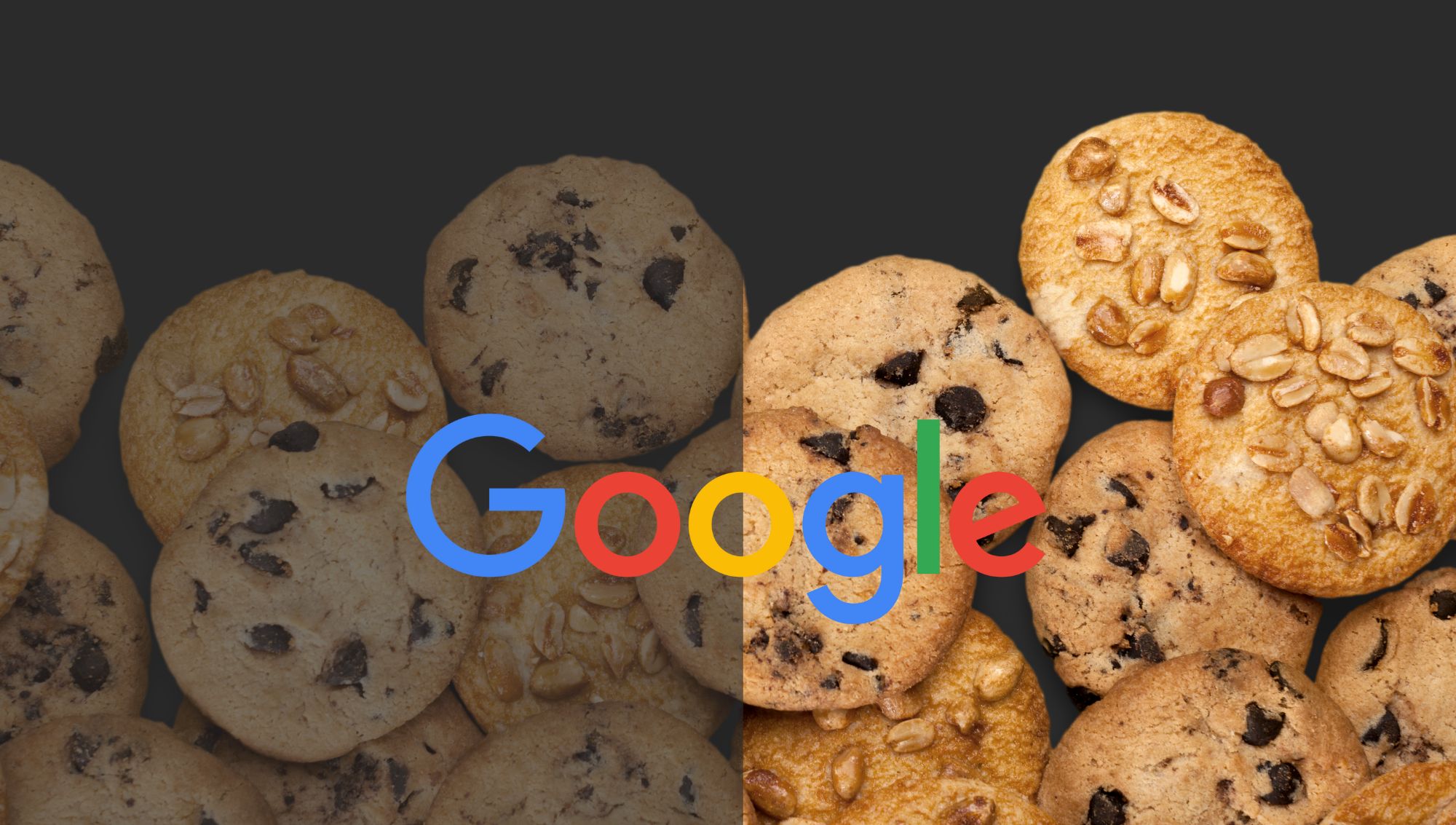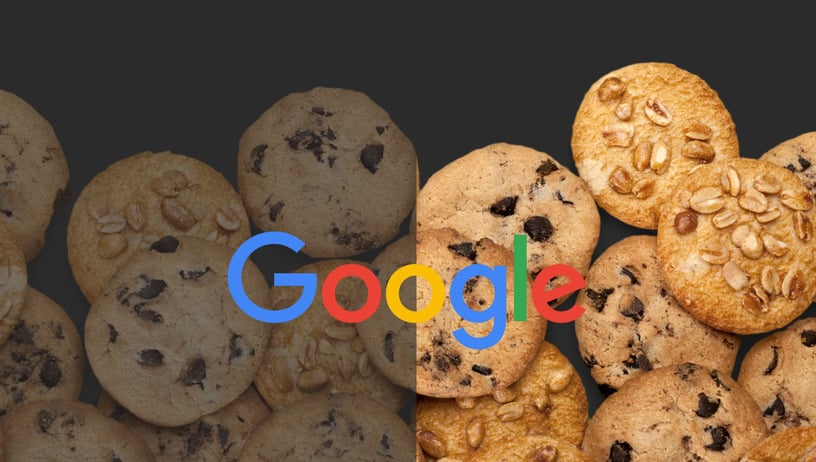
Are you ready for Google phasing out third-party cookies? Server-side tracking assists in implementing first-party data
Google has announced a significant change in their approach to user data by planning the phase-out of third-party cookies. This shift will have a profound impact on how advertisers track and target their audiences online.
Fortunately, Server Side tracking can help implement first-party data.
During 2024, Chrome and Chrome-based browsers will cease using third-party cookies, impacting approximately 35% of internet users in Denmark. Safari and Firefox had already implemented intelligent tracking algorithms in 2021 that could block tracking technologies, so this is simply the next step in that direction.
Google's decision to discontinue support for third-party cookies is primarily driven by an increased focus on user privacy protection. According to Google, this change is part of a broader industry movement towards more sustainable and private methods of data collection and ad targeting.
It's important to understand that this change could significantly impact online advertising, as traditional tracking techniques will gradually become less effective. For advertisers and website owners, the phase-out of third-party cookies means that the ability to track and target users will be significantly affected. Traditional approaches to data collection and targeting will no longer be as reliable or effective as before (in some cases, they may cease to function entirely), necessitating adjustments in marketing strategies and user targeting.
What are third-party cookies?
Third-party cookies constitute a fundamental part of the online data collection ecosystem, playing a crucial role in how the internet functions, particularly in the realm of online advertising.
These cookies are small text files created by websites you don't directly visit but are stored in your browser when you interact with other web pages. Unlike first-party cookies, which are created by the specific website you visit, third-party cookies are generated by other domains or third-party services used on that particular website. They can include functionalities from advertising networks to analytics companies and social media - essentially, remarketing.
The purpose of third-party cookies is to enable tracking and data collection across different websites. They allow external services to track your activity across the web, gathering information about your behavior, preferences, and interests. This information is then used, for instance, to tailor and target ads to you based on your online activities.
The use of third-party cookies has traditionally provided advertisers and marketers with an efficient means to reach their target audiences by delivering more relevant and tailored content. However, this method has also raised increasing concerns about privacy and data confidentiality. Many users have expressed worries about how their data is collected and used across the internet.
This has led to a heightened focus on data protection and regulation, resulting in a movement toward more restrictive guidelines regarding the use of third-party cookies. Major tech companies like Google, Apple, and Mozilla have therefore decided to limit or remove support for third-party cookies in their browsers. This move aims to empower users to have more control over their data and enhance online privacy by limiting cross-site tracking possibilities.
Why is Google phasing out third-party cookies?
Google has decided to phase out support for third-party cookies as part of their efforts to enhance user privacy and create more sustainable methods for data collection and advertising. This decision is a response to a globally increased focus on safeguarding user data and privacy, which demands greater transparency and control over how user data is collected and utilized online.
Google's primary objective is to address concerns regarding internet user privacy. Third-party cookies have long been used to track user behavior across different websites, raising concerns about data privacy and potential misuse of personal information.
By phasing out third-party cookies, Google aims to establish more sustainable methods for advertising and data collection that they believe respect user privacy. This involves moving away from extensive tracking techniques and instead focusing on more anonymous and less invasive approaches. Google aims for a more respectful and responsible method for online advertising.
It's important to note that this process has been delayed on several occasions, primarily because Google wants to ensure full control over aspects such as implementation and tools before the final phase-out occurs. Therefore, it's still a work in progress, but it's been reported that the phase-out is expected to commence in Q1 2024.
What does it mean for you?
Whether you're a regular user or an advertiser, this change will have significant consequences. It will particularly make tracking and targeting users more challenging than before, necessitating a fundamental restructuring of your approach to data collection and marketing.
For the average online user
On one hand, it's positive to witness greater efforts to protect privacy and enhance data security. As a user, it provides a sense of reassurance knowing that online activities won't be intensely tracked by third-party entities, potentially reducing unwanted ad targeting and safeguarding personal information.
On the other hand, the phase-out might alter how we each receive and interact with online content. The ads we see might become less precise or personalized, impacting the relevance and quality of information we find online. Simultaneously, it might also mean that some of the services or websites we commonly use won't offer the same degree of personalization or user experience.
For the online advertiser
The phase-out of third-party cookies will impact online businesses' ability to reach their target audience and deliver relevant content or ads. It might require us to adapt and find alternative ways to reach our audience.
As an advertiser, the focus should therefore be on:
- Lack of user data: Third-party cookies have been crucial in gathering data about user behavior across different websites. Without them, advertisers lose extensive behavioral data that was previously used to tailor ads and target specific audiences, potentially leading to less precise targeting, affecting the effectiveness of ad campaigns.
- Shift in targeting techniques: Advertisers will need to find alternative ways to target ads - without direct access to individual user behavior. This might mean a greater reliance on first-party data and more generalized audiences, which might not be as effective.
- Changes in ad effectiveness: The change might result in a decrease in ad effectiveness and ROI. Traditional ways of targeting ads might no longer be as accurate or effective as before, impacting ad budgets and results negatively.
- Need for new data collection approaches: To compensate for the loss of third-party cookies, advertisers need to start focusing on building and leveraging their own first-party data. This could involve building user loyalty, encouraging direct interaction, engagement on owned platforms, and perhaps even collaborations with other businesses.
Overall, the phase-out of third-party cookies poses a challenge for advertisers who need to reconsider and restructure their approaches to targeting and data collection while maintaining the relevance and effectiveness of their ad campaigns.
What is Server Side tracking? And what is Client Side tracking?
Server Side tracking is a method of data collection that occurs directly on a server. This approach to tracking allows for more control, increased security, and less dependence on client-based technologies. By moving data collection to the server level, you avoid many of the limitations associated with third-party cookies.
Traditionally, tracking user behavior occurs through Client Side tracking, where scripts or tags execute in the user's browser – something that can be limited by various factors such as ad-blockers, cookie consent, etc. With Server Side tracking, tracking is implemented on the server itself, meaning data collection occurs based on requests and actions sent to the server from the user. This approach circumvents some of the traditional challenges associated with Client Side tracking.
More and more browsers are blocking cookies after 7 days. This means that with Client Side tracking, it's impossible to track visitors/customers beyond 7 days after they've visited your website. If a person clicks on your Google Ads but only converts 8 days later, Google Ads won't receive credit for the conversion. With Server Side Tracking, it's possible to track beyond those 7 days, providing more accurate data about visitors and your campaigns.
Server Side tracking often means greater flexibility as well. Since tracking occurs at the server level, companies have more control over what data is collected and how it's handled, helping overcome certain limitations or restrictions normally encountered at the user level. Additionally, Server Side tracking allows for better data protection and improved user privacy. Because data collection occurs on the server, users may experience potential protection from certain tracking technologies that typically operate at the user level.
All of this is due to a user ID stored with Server Side tracking. This ID can be recognized by the server across all channels and devices, allowing easy enrichment of data about your visitors and the ability to send information to them - a significant advantage for your marketing efforts.
Server Side tracking can also optimize your website's speed since, with Server Side tracking, you don't need to load all the tracking scripts typically used with Client Side tracking. This is something that benefits both Google and your users.
How can Server Side tracking help as Google phases out third-party cookies?
When Google phases out third-party cookies, there will simultaneously be a shift towards more privacy-conscious data methods affecting marketing and data collection. And Server Side tracking can become crucial in that era. The method offers an alternative approach to collecting user behavior data - without relying on traditional third-party cookies.
That means the solution is to integrate first-party data into your tracking, allowing you to track based on the customer's user profile rather than via cookies.
With Server Side tracking, companies can gather data directly on their servers instead of relying on the user's browsers to handle tracking. It provides a reliable and flexible method for collecting user data, as it isn't limited by browser restrictions like ad-blockers. And it's a way to respect user privacy rights while maintaining a certain level of targeting and personalization in your marketing strategies - if everything is set up correctly (unfortunately, we've seen many cases of misconfiguration).
So, Server Side tracking allows for a more controlled approach to data collection. Companies can filter and control the data collected and how it's processed at the server level. This can minimize the risk of data leaks or unauthorized use of data.
While Server Side tracking may not necessarily replace all aspects of third-party cookies, it presents an opportunity for companies aiming to stay ahead in the changing landscape of data collection and advertising.
Furthermore, it's been reported that Google is introducing their Privacy Sandbox. It will serve as an anonymized alternative to third-party cookies.
In an extended version of Server Side tracking, you can track 100% of your conversions.
Today, most data is incomplete, and tracking is becoming more complex. This is primarily due to the imminent discontinuation of third-party cookies, as well as Apple creating more challenges with Intelligent Tracking Prevention (ITP) on Safari browsers. Additionally, factors such as ad-blockers, privacy restrictions, GDPR compliance, and issues with tracking purchases occurring outside of a website, like through MobilePay, contribute to these complexities. For instance, MobilePay closes before redirecting to a confirmation page after payment.
All these changes are happening at a time when tracking and data are more critical than ever. They are crucial for making business-critical decisions and providing marketing algorithms with the best conditions for optimal performance in digital marketing.
Setting up Server Side tracking in its 'classic form' ensures bypassing ad-blockers, extending the lifespan of marketing cookies, modeling data for those who reject cookies, actively utilizing first-party data, and overall improving website speed. However, there's often potential for more!
With traditional Server Side tracking, around 15-35% of all conversions are still frequently missed.
Consequently, tracking is a significant focus area for everyone (or it should be!), and there's an increasing demand for tracking improvement. As one out of five global top partners with Stape (the leading system for hosting and managing Server Side tracking) and the ability to co-develop with Stape, this area is essential for MCB.
Therefore, we're dedicated to being among the best at optimizing tracking.
MCB has developed an 'enhanced' version of the classic Server Side setup, ensuring that 100% of all conversions are recorded across platforms, including Google Analytics 4, Google Ads, Facebook, and other tools.
This has particularly benefited Helm. With 100% accurate data between their CRM and GA4, 15% more conversions have been registered, which GA4 couldn't track on its own. Consequently, there's a 17% increase in revenue.
Moreover, Google Ads have seen a significant lift. There's a 19% increase in conversions and a whopping 29% surge in revenue. This has a significant impact on the algorithms' effectiveness and, thus, the overall outcome of advertising set up on Google.
Read the entire case with Helm here.
Whether you're like Helm, running an e-commerce store and tracking purchases, managing an educational institution and monitoring course enrollments, or wanting comprehensive tracking on your website for newsletter sign-ups, file downloads, phone number clicks, or other interactions, this solution is an excellent fit for you. However, we particularly recommend it for e-commerce businesses.
How do you get started with Server Side tracking?
Implementing Server Side tracking requires a more technical approach compared to traditional Client-Based tracking. It typically involves setting up server configurations, customizing coding, and organizing data collection methods.
While it might seem challenging, the benefits of a more reliable and robust method of data collection can be significant in the long run - especially at present.
At MCB, we're more than happy to assist you with the setup of both traditional Server Side tracking and our own extension that ensures 100% tracking.
The price for setting up Server Side tracking depends on several factors related to the complexity of your Google Tag Manager setup and the volume of data transmitted to your server.











